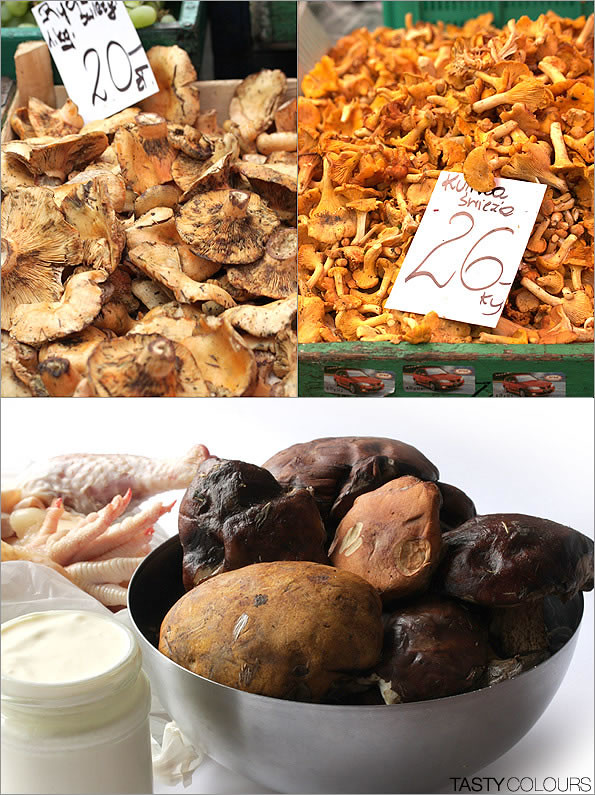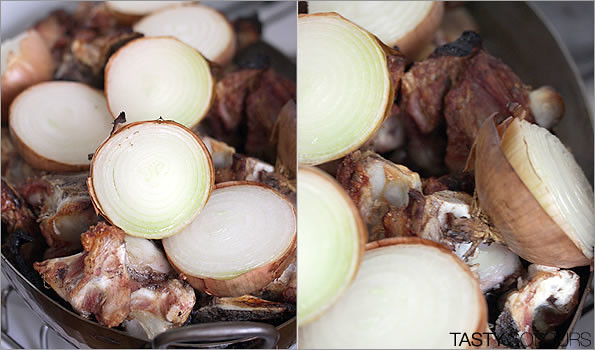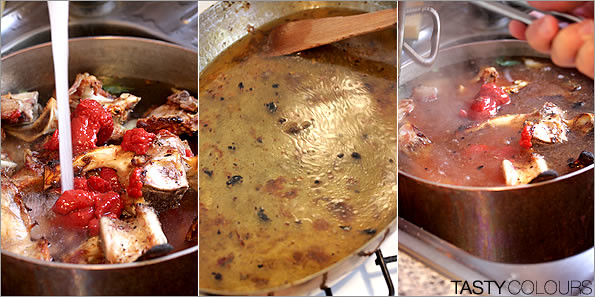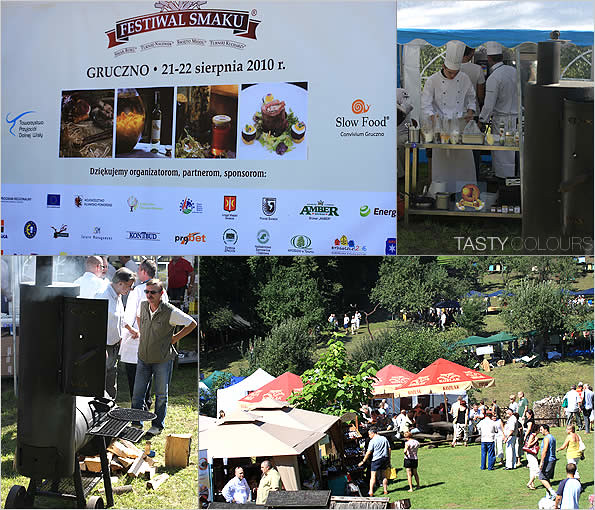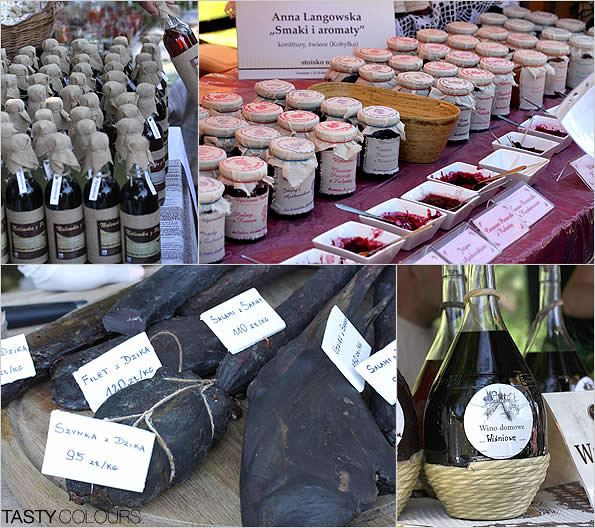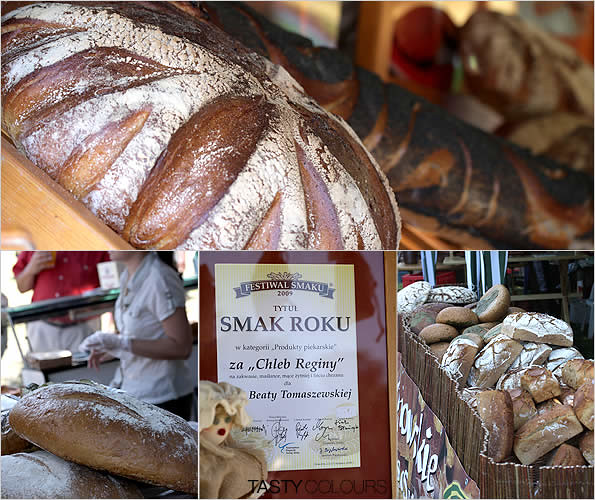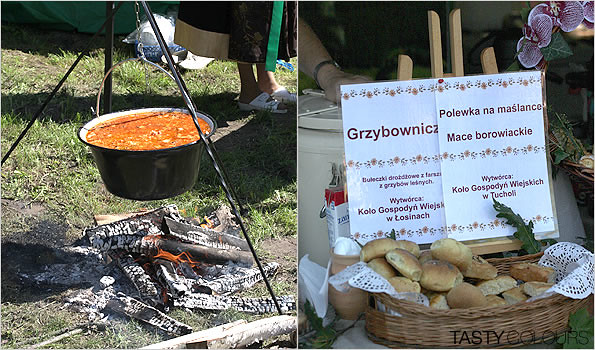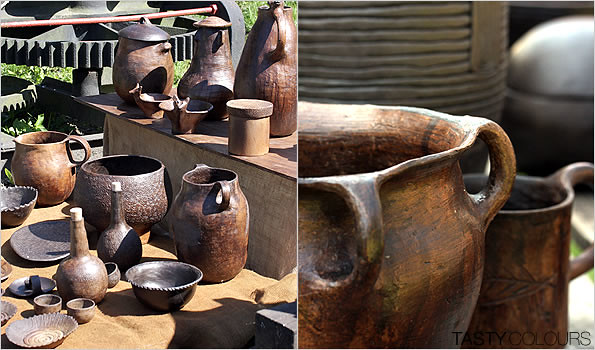In June, I presented the dish “Pierogi with Lamb”, for which I used my homemade veal stock reduced to demi - glace.
Stocks are the foundation of classic French Haute Cuisine. The French name for stock is fond - meaning “foundation”. There exist two types of stocks: white stocks and brown stocks. The first ones are prepared from bones of birds, fish or veal, which are simmered in water with vegetables and herbs. They are lighter than brown stock – the second type. To obtain a brown stock, one should fry or roast the bones first. Brown stocks may be made from veal, beef, poultry, lamb, pork, venison or even shells or shellfish.
This post is about brown veal stock. We make it at home several times per year. Some say that we are the last generation to learn how to cook with veal bones. It is not easy to buy them these days. Even in France, the legislation may change in the coming years, so we will not be able to buy them anymore. Still, we can buy them quite easily in butcher shops in Paris, and in Kraków.
As I already mentioned in my post about Pierogi with Lamb and Morels, veal stock is a kind of preparation that it is difficult to make at home (because, for example, in some countries you will not get any veal bones in any store – in this case one can use beef bones) and those industrial powdered stocks are hopeless. Moreover, to prepare homemade veal stock (or any other stock) is an absolute messy job. Furthermore, the authentic, homemade veal stock itself may not be very interesting in taste – its pure taste is not so pleasant. But what is fascinating about it is that once you combine it with other flavors, like for example, meat juices, wild mushrooms, butter, cream, garlic or alcohol - it becomes something absolutely outstanding.
There are tons of veal stock recipes. Some people like to dust the bones with flour before roasting them, others (like us) prefer not to roast the vegetables, or to deglaze the roasting pan with wine. Some prefer to add vegetables just one hour before the end of cooking. Others like to add bouqet garni. Just feel free to choose your favorite options. The recipe that I present here was given to me by my husband who taught me how to make good, classical veal stock and demi-glace. The recipe comes from one of the French restaurants, which he had been working et when he was younger.
Once your veal stock is ready, you can play with it further and reduce it to about one third and make a more concentrated stock called demi-glace , or reduce it even more (as little as a tenth of its original volume) – to obtain a glace – a sticky reduction ideal to flavor your sauces. I know: those sauces made with veal stock are not very light; but they are delicious; moreover, we do not eat them every day.
You will find here some advices to prepare a good veal stock, that I collected from my husband and from Michael Booth’s book (which helped me to write this post). Please note another book that I recently found: “Le Cordon Bleu’s Complete Cooking Techniques”.
I recommend cooking your own veal stock at least once in your life. If you cannot buy fresh veal bones, try to cook beef stock, following these instructions and the recipe:
(i) Use good bones (the fresher, the better), cut into small pieces;
(ii) Use fresh vegetables (“a stock made with garbage will taste like garbage” – Alice Walters – Chez Panisse) the so called “mirepoix” (combination of carrots, onions, celery and sometimes garlic and shallots);
(iii) The mirepoix should not dominate the flavor of the stock, so do not use too much of it (maximum around 20 per cent the weight of mirepoix to bones);
(iv) You can add a bouqet garni (a mixture of laurel leaves and thyme, sometimes parsley stems as well); we do not add any, as we want to have a clear, blend stock, which we will use later for various sauces of different flavors;
(v) We do not salt and pepper the stock, because it constitutes a base for sauces, which will be reduced and seasoned later; if you will salt the stock during simmering the risk is that you will waste your job because the salty taste will intensify after reduction;
(vi) It is important to simmer the stock for at least a few hours – a stock which will not be cooked enough, will be watery and without flavor; and on the contrary, a stock which will be overcooked may become bitter;
(vii) Do not use a nonstick frying pan or saucepan to roast the bones – you need a good “sticky” roasting-pan, so you can deglaze all goods that stuck to its surface while roasting the bones.
Ingredients:
3 to 4 kg good quality and fresh veal bones, cut into pieces by your butcher, rinsed under cold water and dried (you can replace veal bones by beef bones, but beef stock is not as good as veal stock, because veal bones have more gelatin so the sauce will look better)
4 big onions, washed from soil, dried (but not peeled!), cut into halves
2 small cans of tomato paste
2 to 3 stalks of celery, washed and chopped in thick slices
3 carrots, washed and cut into thick slices
1 large, thick-bottomed roasting pan
1 large saucepan of about 10 liter capacity (the best is a narrow and high saucepan to minimize evaporating during cooking)
1large strainer
1”chinois” or muslin
Heat the oven to 220° Celsius (430° Fahrenheit). Place the bones in the roasting pan and place the pan in the oven for about 1.15 to 1.5 hours. Be careful – the bones should brown evenly, and not burn. For that purpose, occasionally remove the roasting pan from the oven and flip the bones.
Once the bones are slightly gold (after about one hour), place onions on top of the bones. Roast everything another 15 to 20 minutes (you should really watch the onions and bones to prevent them from burning).
In the meantime, add slices of celery and carrot into the saucepan.
Then remove the roasting pan from the oven. Add onions and bones to the saucepan. Add tomato paste.
One important thing: the bones render some fat while roasting. Drain off as much of the fat as possible, using a sieve to catch the precious brown bits from the bottom of the pan. Do not throw away those brown bits! Pour some water into the roasting pan and deglaze it over heat by scraping all browning from the pan. Pour the liquid into the saucepan with bones and vegetables.
Fill the saucepan with cold water (about 5 cm above the level of the bones) and bring to a boil. Then reduce the heat to an absolute minimum, so it can simmer. It should simmer gently between 5 and 6 hours. Simmering does not stir up impurities in the way that a rolling boil would and keeps the stock clearer. The bones have to have enough time to give their full flavor. Occasionally, using a ladle, remove the impurities (mostly fat) which will rise to the top.
Using a ladle, strain the stock through a strainer set over a large bowl. Discard bones, vegetables and all other big solids. Then, using a “chinois” or a muslin, strain the stock once more, in order to get rid of smaller solids. Your stock is ready to use. It should have the brownish-cold color, similar to something between milk chocolate and caramel. At this stage, you can pour portions of the stock into plastic containers and freeze it, should you wish to use it later.
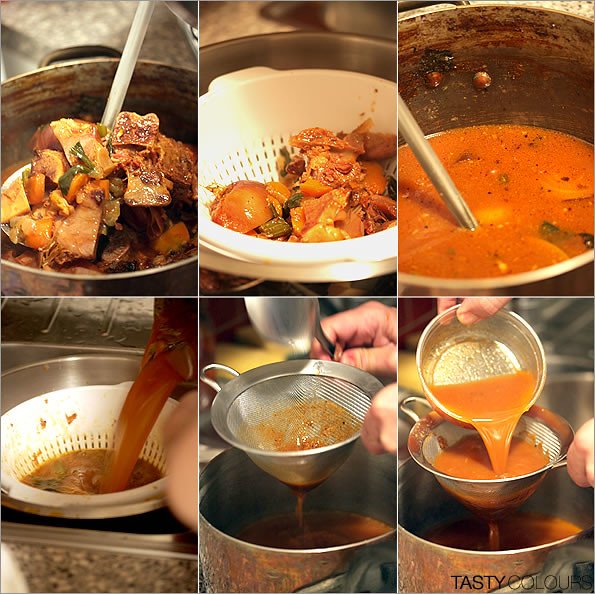
If you want to make demi-glace, apply the following instructions: pour the stock into a smaller saucepan and bring it to a boil. Once it is boiling, reduce the heat to a minimum. Simmer for about one hour - the cooking time will however depend on the thickness of the stock - sometimes you will need a bit less, sometimes more time. The best test to do is to pour a bit of stock into a cup and place it in the fridge. Once it thickens when cooled down, the stock is ready. Occasionally, with a ladle, remove the foam which will form on the top.
Pour the veal stock into small plastic containers or ice cubes moulds. Once it is cooled down, freeze it and use it when needed.


